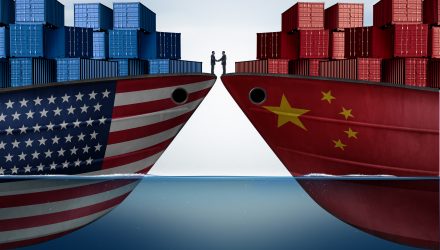U.S. markets came to life on Tuesday, which also resuscitated the Asian markets on Wednesday after optimism from improved prospects of a U.S.-China trade deal came when U.S. President Donald Trump said in a tweet he “had a very good telephone conversation” with Chinese President Xi Jinping. The positive news could cast emerging markets in a positive light as the hopes for a trade deal don’t appear dashed just yet.
Had a very good telephone conversation with President Xi of China. We will be having an extended meeting next week at the G-20 in Japan. Our respective teams will begin talks prior to our meeting.
— Donald J. Trump (@realDonaldTrump) June 18, 2019
The G-20 Summit in Japan will be on the docket for June 28 where the two leaders of the world’s largest economies will discuss the current trade impasse. However, some economists are doubtful that a tangible trade deal will get done.
“We do not believe that the meeting will deliver a trade deal, even if the meeting does take place. From the Chinese side, the discussion with US President Trump is expected only to exchange views on fundamental issues concerning the development of China-US relations,” Iris Pang, Greater China economist at ING, wrote in a note.
“The news on the talks in Osaka is a short term positive for asset markets, but we believe any talks will change little unless either side makes some meaningful concessions, which we do not view as likely at this time,” Pang said.
Can this be a sign of growth in emerging markets over developed markets?
Playing the EM over DM Angle
The trade impasse with the United States didn’t seem to affect China in May as the country’s overall trade surplus was about $42 billion–double the $20.5 billion expected by economists polled by Reuters. The data comes just as the International Monetary Fund (IMF) lowered the growth expectations for China through the rest of the year.
The IMF projected a growth forecast of 6.3 percent, lowering their initial expected growth rate of 6.2 percent. They’re expecting that to slow further in 2020 to 6 percent and even lower to 5.5 percent by the year 2024.
Can this be a sign of growth in emerging markets over developed markets?
2019 has thus far seen the reemergence of emerging markets (EM), but while investors are sifting through the plethora of opportunities the EM space has to offer, investors can play to the strength of the EM space over developed markets.
For investors looking for the continued upside in emerging market assets, the Direxion MSCI Emerging Over Developed Markets ETF (NYSEArca: RWED) offers them the ability to benefit not only from emerging markets potentially performing well, but from emerging markets outperforming developed markets.
“EM’s discount to developed markets has been relatively attractive. At the same time, earnings expectations have improved and actually look favorable for EM,” Direxion Investments noted in a 2019 Relative Weight Spotlight. “Of course, if the Federal Reserve feels that the data to raise rates faster than expected, EM would suffer. Overall, if some of the concerns, such as trade or idiosyncratic issues do not come to fruition, investors may jump into EM equities, especially with the attractive relative valuations. Net-net, the direction of global growth will likely remain the greatest driver of performance with EM outperforming if growth ticks up and DM doing well with slowing growth.”
RWED seeks investment results that track the MSCI Emerging Markets IMI – EAFE IMI 150/50 Return Spread Index. The Index measures the performance of a portfolio that has 150 percent long exposure to the MSCI Emerging Markets IMI Index and 50 percent short exposure to the MSCI EAFE IMI Index.
On a monthly basis, the Index will rebalance such that the weight of the Long Component is equal to 150% and the weight of the Short Component is equal to 50% of the Index value. In tracking the Index, the Fund seeks to provide a vehicle for investors looking to efficiently express an emerging over developed investment view by overweighting exposure to the Long Component and shorting exposure to the Short Component.
For more relative market trends, visit our Relative Value Channel.

